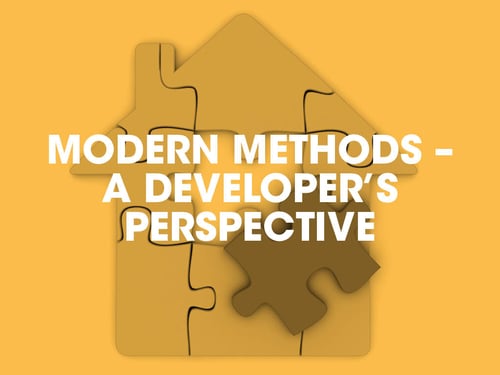First, you need the right business culture
While L&Q does not have shareholders to satisfy, it does face the full scrutiny of the Regulator of Social Housing and as a charity has to be as responsible with its money, if not more so, as any private business. Wayne Hill described a culture of trust that already existed when he joined as Construction Service Director to spearhead the organisation’s Production Innovation journey, set up solely to explore new ways of working. A patient approach was important while the team spent a year of intensive research to develop an MMC roadmap. Learning from other sectors, the team had to have an honest approach to questions such as, “How long will it take? How many people will it need? How much will it cost?”; with sometimes the questions being answered with “we don’t know yet.”
Trust wasn’t only confined to the housing provider. L&Q worked with an academic institution to identify an alliance contract, as there was no precedent in the sector to explore collaborative working with the supply chain. “There was no contract available for collaborative working,” Wayne said. “We want to build and we want suppliers to join us on our journey This approach to working between client, consultant and supplier is encouraging peer-to-peer learning, trust and bridging the gaps that exist in construction and design.”
Recognise all the milestones, not just the physical ones
Wayne recalled that when he asked for the standard size of a bathroom, no-one could say. “If you were in Apple or BMW and didn’t know the size of one of your most common components, you wouldn’t be in the business,” he said. “In the industry we’re really poor in this area. So one of the first milestones for us was when we did all the analytics and finally defined the products that we build.”
Adopting MMC, or any significant change, forces a business to ask questions of itself that it may not have considered, either deliberately or accidentally.
L&Q’s learning curve is bearing fruit this year, with its first MMC homes being constructed on site in the Home Counties and MMC elements in “flatted” homes due to make their debut in 2020.
Learning and pragmatism – recognising when MMC doesn’t work
Wayne said: “We’re going into this knowing that from the manufacturing model there are great gains to be made. It’s almost asinine that we don’t do this anyway. But we need to be open and honest. Part of this isn’t about doing MMC for the sake of it, it’s doing it for the right reasons.”
Starting from a point of being honest about how much we do know, the team is receptive to new ways of working, new systems and products as and when they come online.
“There’s no right or wrong,” he added. “We’re just going into this in very objectively and in the direction that the outputs of our research take us. And yes, if after 10 years we look at all the metrics and see traditional was better all along, we would go back to it.”
L&Q states that MMC’s success depends on volume, typology and repetition. According to Wayne, it makes it difficult to get viability for smaller sites, such as S106 allocations. However, plans to aggregate S106 allocations across developments may provide the quantity needed to be able to utilise MMC solutions.
What are the risks?
While the Housing, Communities and Local Government Committee’s report lists 11 barriers to MMC adoption, those exploring its potential now are, to some degree, at the mercy of failures elsewhere.
“It’s better to be right than to be first and as an industry we are guilty of wanting to be first and getting it done really quickly,” Wayne said. “We just hope there aren’t too many examples of failure down the line where that alignment or investment is misdirected. That’s the greatest risk to the industry at the moment.”
The next phase in industry’s MMC journey?
Consolidation, learning and building the business case for MMC needs to happen next, according to Wayne. The sector requires a better understanding of its housing pipeline and more conclusive evidence of the cost/time benefits of MMC versus traditional build. He’s supportive of the Government’s intervention in this area to date but admits it’s really up to housing sector to identify their needs before significant investment can be directed into MMC factories and infrastructure.
So while he cautions against rushing to be first, Wayne equally sees a tipping point being the housing sector’s first MMC success story. “Our priority is to succeed and we know that if one succeeds, we will all succeed. A rising tide lifts all,” he said.


Have your say